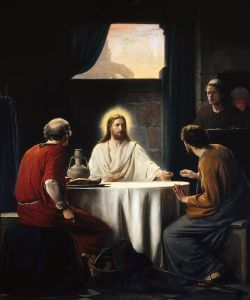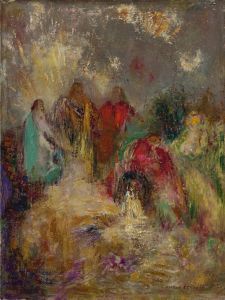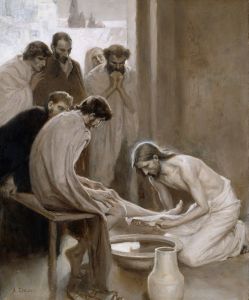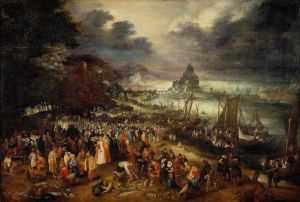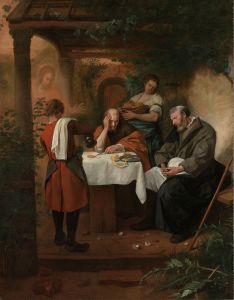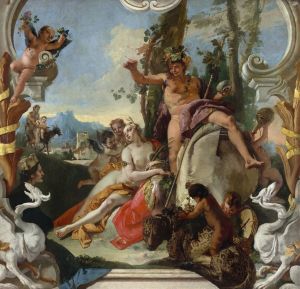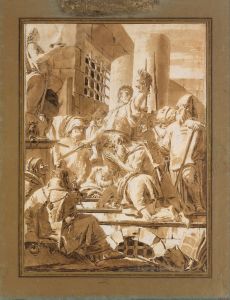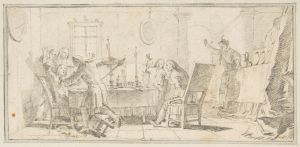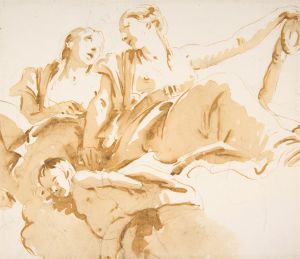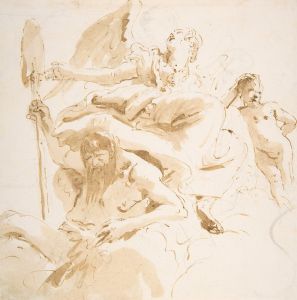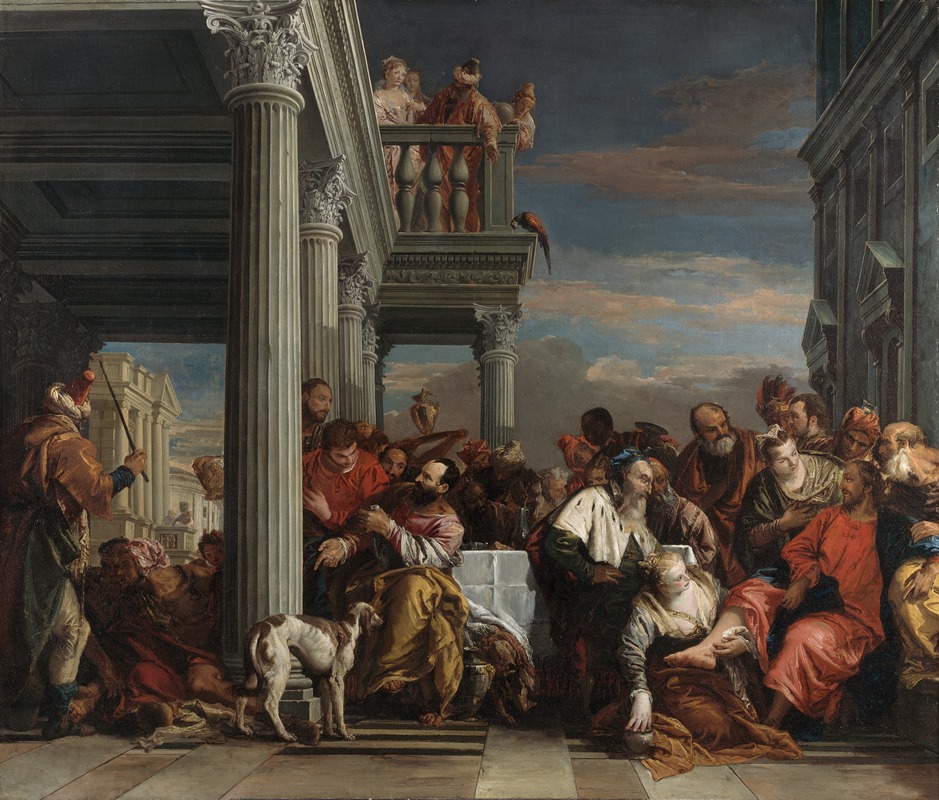
Christ in the House of Simon the Pharisee
A hand-painted replica of Giovanni Battista Tiepolo’s masterpiece Christ in the House of Simon the Pharisee, meticulously crafted by professional artists to capture the true essence of the original. Each piece is created with museum-quality canvas and rare mineral pigments, carefully painted by experienced artists with delicate brushstrokes and rich, layered colors to perfectly recreate the texture of the original artwork. Unlike machine-printed reproductions, this hand-painted version brings the painting to life, infused with the artist’s emotions and skill in every stroke. Whether for personal collection or home decoration, it instantly elevates the artistic atmosphere of any space.
"Christ in the House of Simon the Pharisee" is a notable painting by the Italian artist Giovanni Battista Tiepolo, created in 1745. Tiepolo, a prominent figure of the Venetian school, is renowned for his grand historical and religious compositions, characterized by their vibrant color, dynamic compositions, and dramatic use of light and shadow.
This particular painting depicts a scene from the New Testament, specifically from the Gospel of Luke, chapter 7, verses 36-50. The narrative illustrates the moment when Jesus is invited to dine at the house of Simon the Pharisee. During the meal, a woman known to be a sinner enters the house, weeping at Jesus' feet, washing them with her tears, and anointing them with expensive perfume. This act of devotion and repentance becomes a central theme of the painting, highlighting themes of forgiveness and redemption.
Tiepolo's composition captures the emotional intensity of the scene. The figures are arranged in a dynamic manner, with Jesus positioned centrally, exuding calm and authority. The woman, often identified as Mary Magdalene in traditional interpretations, is depicted at Jesus' feet, her expression one of deep humility and reverence. Simon the Pharisee, along with other guests, is shown reacting to the woman's actions, providing a contrast between skepticism and faith.
The painting is a testament to Tiepolo's mastery of the Rococo style, evident in the fluidity of the figures and the opulent setting. The use of light is particularly striking, with a soft, diffused glow that enhances the spiritual atmosphere of the scene. Tiepolo's palette is rich and varied, employing a range of colors that add depth and vibrancy to the composition.
"Christ in the House of Simon the Pharisee" is housed in the National Gallery of Scotland, Edinburgh. It is part of a larger series of works by Tiepolo that explore biblical themes, showcasing his ability to convey complex theological concepts through art. The painting is considered an important example of 18th-century religious art, reflecting the period's interest in combining narrative clarity with emotional expressiveness.
Tiepolo's work was highly influential during his lifetime and continues to be studied for its artistic and historical significance. His ability to blend traditional religious iconography with the stylistic innovations of his time has secured his place as one of the leading painters of the Baroque period. "Christ in the House of Simon the Pharisee" remains a significant piece within his oeuvre, illustrating his skill in storytelling and his deep understanding of human emotion and divine grace.





